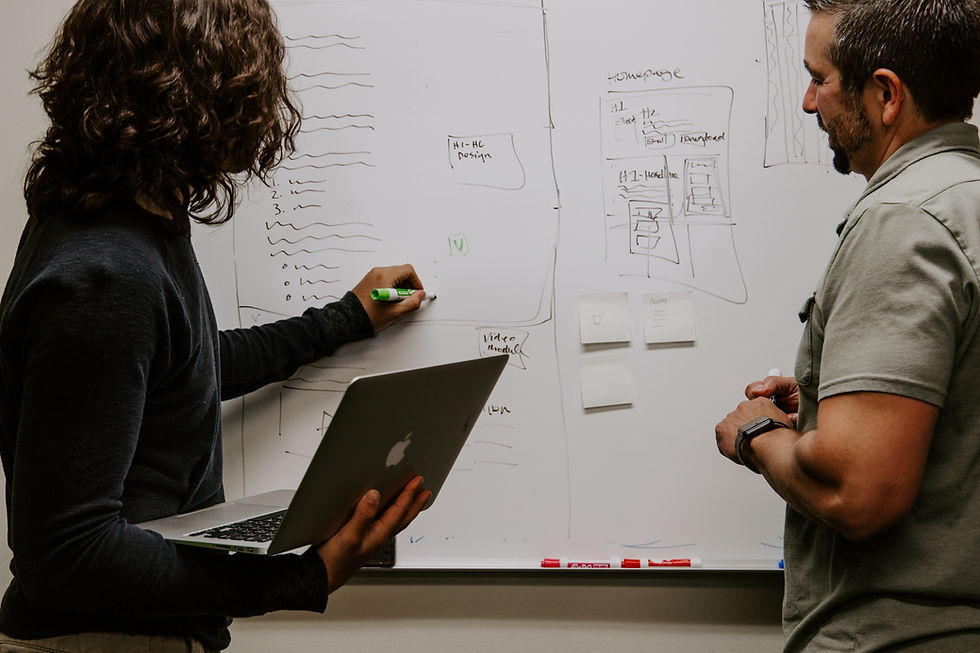Discovered Incidentally: The Solution to the MLOps Challenge in Organizations
- Eitan Netzer

- Apr 19, 2022
- 5 min read

A medical technology company that applied for an FDA registration encountered a problem. Following a staff replacement, the company lost access to the research process, data, and experiments. They did not know where all the data was, what had already been done and what had not been done, and how the data had been processed. It was necessary to develop an algorithm to recover the data in the project, which caused a lengthy delay in the FDA submission process, which is long and expensive anyway.
What can companies in any industry do to avoid similar situations and easily replicate their experiments? What can they do to transition smoothly from research to production?
The solution - MLOps
One solution is to use MLOps - Machine Learning Operations. This is a set of practices that include code version management, data version management, data tracking and recovery, measurement methods for diagnosing model quality, and more.
MLOps are designed to assist in the efficient and successful transfer of machine learning models from the research and development phase to the production phase and facilitate the ongoing maintenance of data models. However, many companies that have started research in the field of AI get stuck in the transition from research to production, and only a few manage to move to production successfully. According to consulting firm Gartner, only 15% of projects successfully transition to production. Two reasons for the failure of the remaining 85% are failed data management and failed conversion from laboratory conditions to the field.
MLOps have several important benefits:
The data world is usually not a "one-man show", and with MLOps it is easier for people in the organization to collaborate.
MLOps work with an interface that makes the documentation and knowledge retention easier, allowing for continuity and preventing damage when employees or vendors change.
It is easier to access all the details that the data scientist needs.
It is easier to manage the day-to-day work such as updating models and performing maintenance.
It is easier to monitor the work. The product manager, for example, can see what has and has not been done.
Why do many companies postpone MLOps and AI implementation?
MLOps address the preservation of knowledge and data in the company, eliminating dependence on one person or a limited number of people having access to the data and information. Unfortunately, however, most of the companies currently developing MLOps are Product-Led Growth (PLG) companies, which means that the use of this solution is mainly possible via self-service.
In other words, organizations interested in incorporating MLOps must do the implementation themselves. In practice, many organizations do not do this, as they are busy with ongoing work and have difficulty finding the time and personnel to perform the task. As a result, even though the market is saturated with MLOps tools, many organizations postpone the implementation of AI solutions and cause themselves future harm.

One of the reasons for avoiding and delaying the implementation of MLOps in organizations is that the training of data scientists often does not include the tools needed for MLOps and their knowledge of infrastructure and DevOps is limited. Today, however, there is a movement called Data-Centric, which shifts the focus from dealing with code and algorithms to managing and leveraging the data. Central to this approach are the MLOps tools. The use of the Data-Centric approach has proven to be effective in improving AI models both in research and the transition to production.
The middle ground: From calculated risk to successful production
Due to the high rate of failures in the transition to production, many companies are reluctant to make large investments in the field of data. They choose to start with small projects on a relatively low budget, and with a Minimum Viable Product (MVP) for Proof of Concept (POC). Only if the POC phase is successful will customers incorporate the MVP into their system. This way, companies can cost-effectively develop a high-quality product within just a month or two, and only then decide whether to take it to production.
However, many companies that take this path and succeed in proving the feasibility of an MVP, get stuck in the transition to production because of an insufficient MLOps infrastructure. The solution: hiring outsourced personnel to implement the transition, transfer the project to the production phase, and then hand it over to the organization’s people. Once the MLOps tools have been successfully integrated, the organization’s employees will be able to continue the system’s operation and maintenance easily on their own.
The solution we developed for internal use has become a product that removes the MLOps barrier
At CoreAI, an AI solutions company, we have developed a work environment for internal use, which is easy to install and simplifies the management of code work, data, and experiments. We have developed this environment following an unfortunate incident of employee replacement, loss of access to data, and inability to recover the data. We essentially developed MLOps for our own use. But then we realized that this environment, which can be likened to a computer operating system, could also make it very easy for us to move customer projects from the experimental and research phase to the production phase. It is also useful when we provide our MVP service, CoreStart, which requires MLOps as well.
As mentioned earlier, transitioning the developed product to production necessitates both MLOps and a professional who knows how to implement the MLOps and the newly developed product. This professional is not a Data Scientist, but rather a DevOp. But it is currently practically impossible to recruit DevOps because they are in short supply in the market. So even if a company started small with an MVP, and proved feasibility, the transition to the production stage is still challenging.
At CoreAI we discovered that we can actually deliver to the customer not only the product we developed for them (the MVP) but also the entire work environment we used during development and which we can also install for the customer. This environment, called Core Control, contains all the processes necessary for implementation and transition to the production phase. It saves the time it would take a Data Scientist to implement the system and prepare the infrastructure, neither of which he likes nor is he an expert in. For the organization, it saves the need for a DevOp, the dependence on separate MLOps, and the need for future service and maintenance, as these are already included in the CoreAI service package.
In other words, Core Control also includes implementation, maintenance, and updating that are not included in most of the MLOps systems currently offered on the market. The implementation of the Core Control environment in the company’s system takes only two weeks, after which the organization has the MLOps it needs and there remains no reason to delay or postpone the implementation of AI.
Today, CoreAI also offers the Core Control environment as a stand-alone, done-for-you service, and thus solves the self-service MLOps challenge for many organizations.
For more information on the Core Control environment and the CoreStart service for MVP development, contact us via email or our website contact form.




Comments